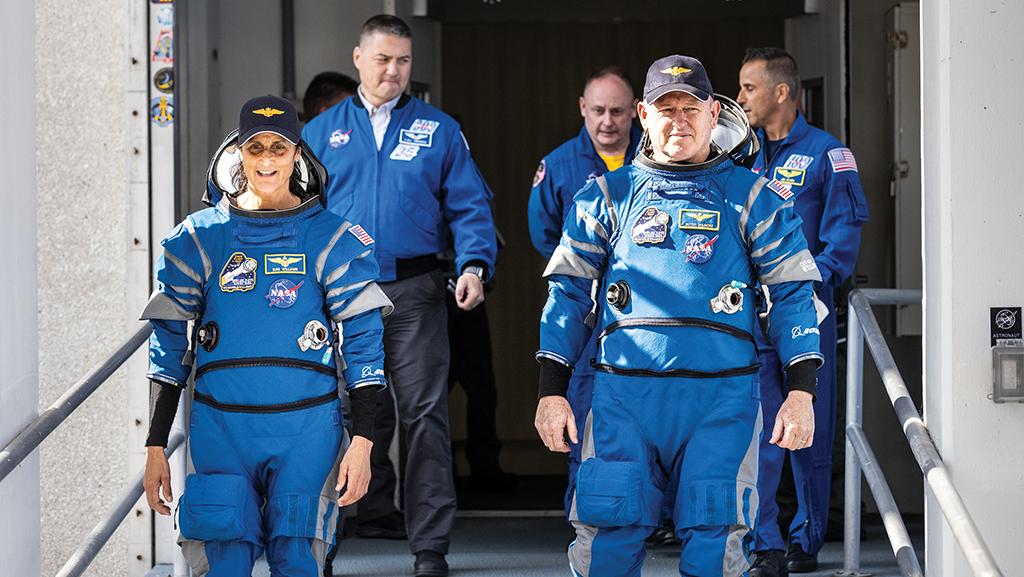
NASA astronauts Sunita Williams (left) and Barry “Butch” Wilmore walked out for a launch day dress rehearsal on April 26. They are slated to launch as early as May 6 on the long-awaited Crew Flight Test of Boeing’s CST-100 Starliner.
Credit: Frank Micheaux/NASA
NASA is once again turning to astronauts with military test pilot experience to cap off the tumultuous, 13-year effort to certify multiple commercial providers for transporting astronauts to and from the International Space Station. The participants in the Boeing Starliner Crew Flight Test (CFT)...
With Starliner’s Crewed Debut, NASA Again Turns To Test Pilots is available to both Aviation Week & Space Technology and AWIN subscribers.
Subscribe now to read this content, plus receive critical analysis into emerging trends, technological advancements, operational best practices and continuous updates to policy, requirements and budgets.
Already a subscriber to AW&ST or AWIN? Log in with your existing email and password.

